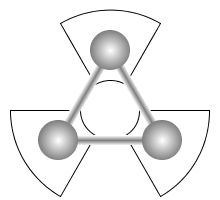 |
Institute for Solid-State Nuclear Physics
Institut für Festkörper-Kernphysik
|
 |
 |
Institute for Solid-State Nuclear Physics
Institut für Festkörper-Kernphysik
|
 |
For the development of the DFR the setup of a modular testing facility would be appropriate. In this facility the stepwise construction of the DFR could be realized. Most development steps also provide vertices for a commercialization branch.
The first step would be the construction of the reactor with a once trough fuel cycle and a heat exchanger to a supercritical water cycle in order to dispose of the heat to a cooling tower or a river.
The dimensioning of the reactor would be about 1 GW_th. In principal it is possible to build a small low powered fast reactor. However the concentration of fissile material would than rise to at least 90% for a thermal power of about 1 MW or less. It is then no longer possible to use plutonium as fissile material because the temperature coefficient due to Doppler broadening of resonance capture is insufficient in order to retain a negative temperature coefficient. Instead highly enriched uranium-235 is required, which would be weapons-grade in contrast to reactor plutonium. A small fast reactor with a plutonium concentration of up to 35% could be constructed with a thermal power below 100 MW down to several 10 MW. With rising size and power level of the reactor the necessary plutonium concentration decreases.
In this first step the principal functioning and the self-regulation features of the reactor are demonstrated.
In the second step a pyrochemical processing unit is connected to the internal fuel cycle of the reactor. Both options of the PPU implementation should be tested, i.e. rectification and electro refining. At this stage the nuclear part is up and running as specified.
A plant derived therefrom can already be put on the market as a transmuter to annihilate waste of current nuclear power plants. If a turbine is introduced in the supercritical water cycle a first power plant can be tendered.
The third step is the construction of a prototype power plant representing the reference system with a supercritical water turbo-generator. Specialized heat exchangers for heat transduction to chemical plants may be developed with possible connected prototype plants for hydrogen, ammonia production or petrochemical processing. The further development steps lead beyond.
A further step could comprise the installation of a noble gas turbine with a direct contact heat exchanger from the liquid metal coolant to the noble gas in the secondary loop. The particular coolant loop intertwine allows for a predetermined innovative leap in the heat exchanger technology which increases the efficiency considerably.
The liquid metal coolant due to its high charge carrier concentration allows for the effective deployment of magneto-hydrodynamic generators which has no moving parts and would be low in maintenance and costs in comparison to gas turbines. A similar advantageous option is the AMTEC generator. The adapted development may result in combined systems increasing the electric efficiency and economy.
The nuclear part of the DFR so far uses actinide halogenides as liquid fuel. The concept, however, alternatively allows for a molten metal alloy. This would enable further advantages. Due to the high heat transportation capability of metals and lower corrosion potential in comparison to molten salt it is possible to further increase the power density -- reducing the size of the core accordingly -- and increase the operating temperature yielding a significantly higher electric efficiency and ERoEI. A second test reactor core may be constructed with metal alloy fuel and an adapted PPU. The metal alloy fuel consists of the actinides and metals with low melting points such as lead, bismuth, tin which result in an alloy with a low solidus temperature analogue to a solder rendering it pumpable.
All along this straight line of development the DFR exposes itself as a power plant technology where the portion of the cumulated exergy expense in the ERoEI pertaining to the DFR and its operation itself is decreasingly small in comparison to the exergy expense for the retrieval of the fissionable material. Since the ERoEI is then limited by the mining operations this means that the DFR exhausts the potential of nuclear fission resulting in an ERoEI two orders of magnitude higher than all conventional power plant technologies including fuel from newly developed resources like shale gas and shale oil and future resources like methane clathrate from the bottom of the oceans. It can therefore greatly outperform generation III+ and generation IV plants which are losing competition with the aforementioned new fossil resources.